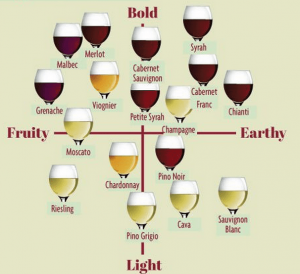Wine Characteristics Working Together
Enjoyed for thousands of years, Wine is a pretty complex beverage. While there are countless different types of wines, all wines share some common characteristics. Understanding the basics of wine can help you better appreciate and enjoy this timeless drink. Here are the 5 basic characteristics of wine.
Flavor
The flavor of wine is perhaps the most important characteristic. Wine has a wide range of flavors, from fruity to spicy to earthy. The flavor of a wine is determined by a combination of factors, including the grape variety, the region in which the grapes are grown, and the winemaking process. Some wines, like Chardonnay, have a strong buttery flavor, while others, like Pinot Noir, have a lighter, more delicate flavor.

Aroma
The aroma, or “nose,” of a wine is another important characteristic. The aroma of wine is determined by the same factors that influence flavor. A wine’s aroma can be fruity, floral, spicy, or earthy, among others. The aroma can also give clues as to the age and quality of the wine. For example, a young wine may have a strong fruity aroma, while an older wine may have a more complex, mature aroma.
Body
The body of a wine refers to its weight and texture in the mouth. Wine can be light-bodied, medium-bodied, or full-bodied. Light-bodied wines, like Pinot Grigio, are typically refreshing and easy to drink. Medium-bodied wines, like Merlot, have a more substantial feel in the mouth, while full-bodied wines, like Cabernet Sauvignon, have a rich, weighty texture.
Acidity
This is a key characteristic of wine that can affect both its flavor and its aging potential. Acidity is what gives wine its tartness or sourness. Wines with high acidity, like Sauvignon Blanc, have a crisp, refreshing flavor, while wines with lower acidity, like Chardonnay, have a smoother, richer flavor. The acidity of a wine also plays a role in its ability to age. Wines with higher acidity can age for longer periods of time, while wines with lower acidity may not age as well.
Tannins
Tannins are compounds found in wine that give it a dry, bitter taste. They are typically found in red wines and are derived from the grape skins, seeds, and stems. Tannins can give a wine a complex, layered flavor and can also help it age well. Wines with high tannins, like Cabernet Sauvignon, have a bold, intense flavor, while wines with low tannins, like Pinot Noir, have a softer, smoother flavor.
Understanding the five basic characteristics of wine can help you better appreciate and enjoy this complex beverage. The flavor, aroma, body, acidity, and tannins of a wine all work together to create a unique taste experience. By paying attention to these characteristics, you can learn to identify different types of wine and understand why they taste the way they do. Cheers!